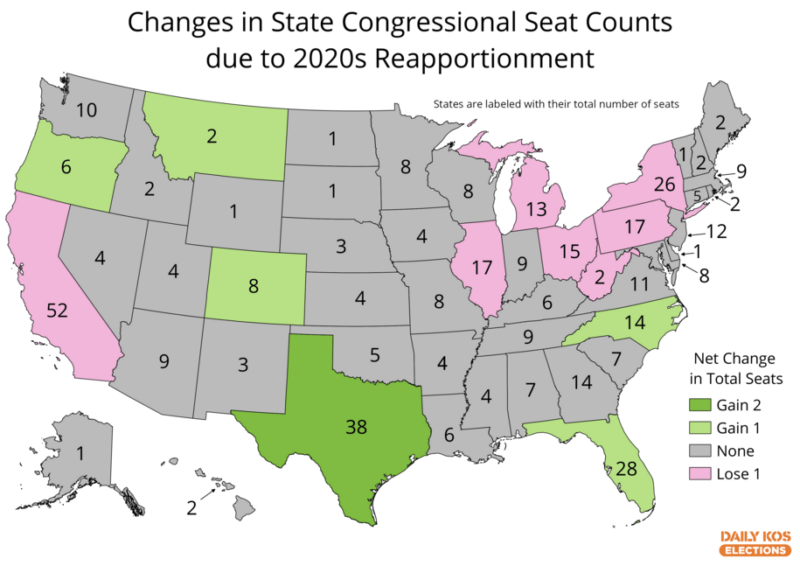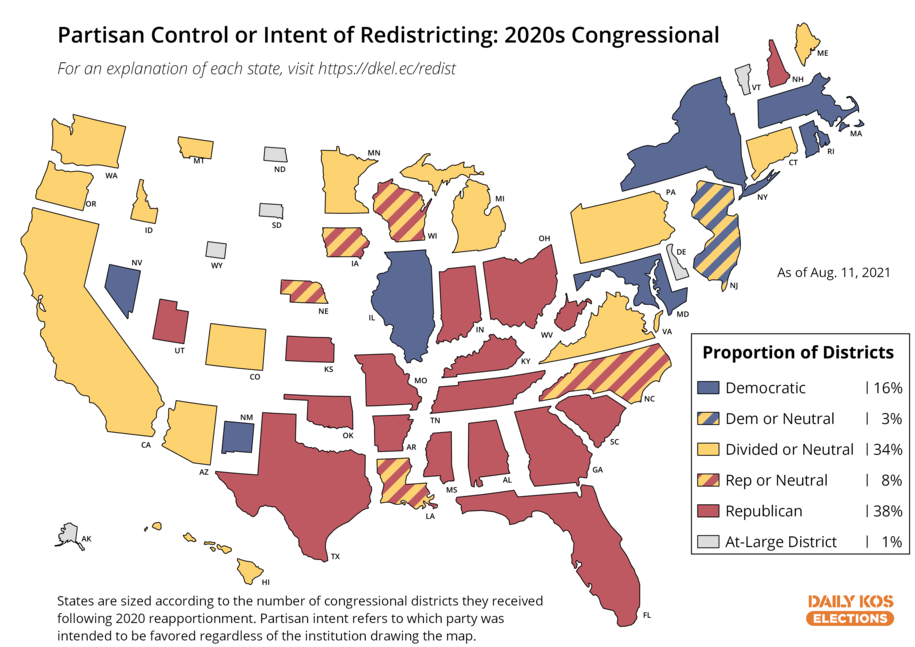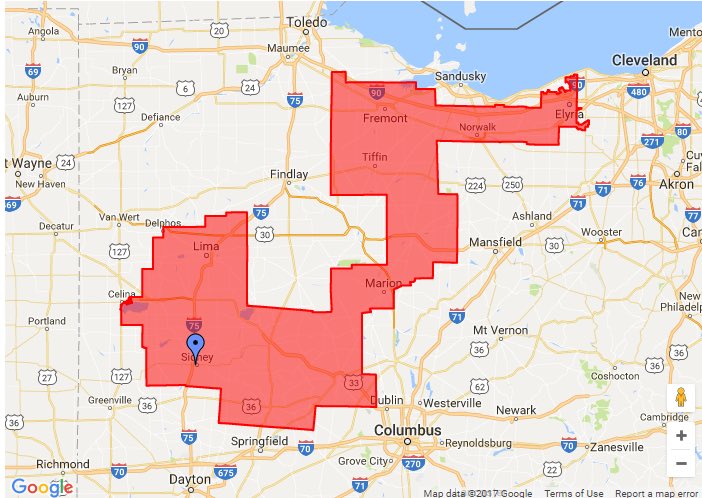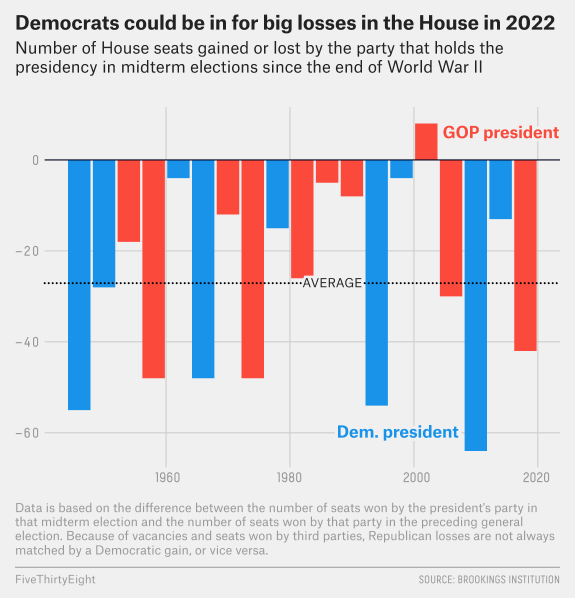Multiculturalism in Census Results Must Be a Factor in Redistricting

Republicans still have the edge in redrawing state maps. That means gerrymandering is alive and well.
Prologue
At first blush, the most recent census results would make a Democrat’s heart sing. America is slowly but surely becoming a diverse, urbanized and multiracial society, as statistics portray a growing density in metropolitan and suburban areas (9% growth) while rural areas barely held on to their population (1% growth).
The white population in this country shrank for the first decade on record. Meanwhile, minority groups grew by leaps and bounds and were a critical factor in population increases in the cities and suburbs. Statistics showed that 36% of US adults are non-white, compared to 25% a decade ago. Among children, the census found that 47% are non-white compared to 35% in 2010.
In rural “Trump Country,” over half of all US counties saw static or declining population while 81% of metropolitan areas grew. Overall, America is 57.8% white, 18.7% Hispanic, 12.1% Black and 11.4% Asian.
What’s not to like?

Crimes in Geography
In a perfect world, the census results could only mean a boon for Democrats for these reasons: Democrats perform well in big cities and increasingly in the suburbs. Republicans find their votes in more rural areas. Democrats do better among people of color. Republicans almost always get the majority of the white vote.
In a perfect world, a map such as the one above that charts Texas’s 35th Congressional District would be an oddity and an outrage. The Washington Post pronounced the 35th one of the six most gerrymandered districts in the US, calling it a “crime in geography.”
The intent is obvious: pack as many Democratic voters into one district and leave the rest for Republicans. The 35th runs from San Antonio (portions of the city mostly low income and minority) and stretches 95 miles up to parts of Austin, where residents there are represented by four different congressmen.
The map has utter contempt for the constituents of the 35th district, where issues in San Marcos can be entirely different from what’s cooking in Austin.
To top it off, Texas gets to add two additional congressional seats in this year’s redistricting affair. The map below reflects all other gains and losses for states across America.

Republicans Maintain Upper Hand in Mapmaking
The election of 2020 had one glorious upside but had a downside as well. Most importantly, we got rid of the clown show at the top. But expectations of “flipping” certain state legislative bodies were not met. Voters apparently split their tickets. And Republicans maintained their upper hand in drawing new districts based on census data and…well, whatever partisan advantage they could get away with.
Don’t think for a minute that Republicans will see the light and surrender to multiculturalism. This is the party that, after all, carved out Texas’s 35th Congressional District. Republicans are frothing at the mouth in anticipation of winning back in the House of Representatives in 2022…a very real possibility thanks to their edge in the number of states they control in redistricting.

Gold Standard
It is reasonable to ask whether any state has wrested free from the ridiculously unfair nature of partisan gerrymandering. In fact, several states have established a non-partisan redistricting commission. But the devil is in the details, as partisan legislatures and governors try mightily to inject themselves in the process.
Colorado could be the diamond in the rough.
Colorado voters approved an independent redistricting commission in 2018. The maps drawn by three retired, nonpartisan judges must follow precise criteria, which is worth quoting as a gold standard of redistricting:
Following federal law; preserving communites of interest; keeping cities and counties whole; maximizing compactness; maximizing the number of politically competitive districts; banning the intentional favoring or disfavoring of a party or candidate; and preventing the dilution of the electoral strength of voters belonging to a racial or ethnic minority.
From Daily Kos
SCOTUS Intervention
On the other hand, looming ominously is the prospect that the US Supreme Court might finally look favorably on striking down all congressional redistricting commissions that were created by ballot box initiatives, without the support of state legislatures. So far, three of the most right-wing justices, Clarence Thomas, Samuel Alito and Neil Gorsuch, have expressed openness to that distorted interpretation of the US Constitution’s Elections Clause.
Textbook Example: Ohio’s Gerrymandered 4th District

In Ohio’s 2011 redistricting, GOP mapmakers created 16 congressional districts: four Democratic and 12 Republican, despite a fairly even split in the popular vote. The state legislature and the governor’s office are still in Republican hands.
The mostly rural 4th congressional district of Ohio Republican Jim Jordan will be an interesting test of the GOP’s willingness to face reality in a state that’s losing a congressional seat.
Republican Requiem
Republicans for the past decade have captured state legislatures across the country for the precise purpose of being in the position of drawing boundaries and rewriting election rules that suit a party that is losing its natural adherents.
The GOP’s biggest fear is a fair, flat playing field, such as the one spelled out by Colorado’s eloquent redistricting declaration. The census results must read like the writing on the wall for Republicans. GOP consultants are working overtime to cheat the hangman.
It’s actually not all that bad for the GOP. Sprawling states fully controlled by Republicans–Texas, Florida–are gaining seats in Congress while Democratic states like California and Illinois are each losing one. Short-term, the GOP needs to flip only five seats to win back the House of Representatives, which gerrymandering makes very doable.
Federal Voting Rights Won’t Pass
It seems that every day I receive a text or email from Indivisible or MoveOn urging me to make calls to support HR-1, a bill that would counter the nationwide GOP push to suppress voting rights and ban gerrymandering. Or else support the John Lewis Voting Rights Advancement Act, which would allow the federal government to once again intervene in cases where state election rules are discriminatory to voters of color.
HR-1 has already passed the House. Passage of the John Lewis bill is imminent. I believe we’re spinning our wheels here. Both bills are subject to the Senate filibuster and there is no way 10 Senate Republicans will vote in favor. (Only Lisa Murkowski of Alaska has expressed support.) Speaker Pelosi might try to include voting rights in a reconciliation package, but the House parliamentarian would look askance at a non-budgetary item. It’s just not going to work on the federal level.
What Is to Be Undone?
Other than winning back state legislatures, an effort that was short-circuited in 2020, I believe the best route to fighting unfair mapmaking is to seek relief in state courts. (The US Supreme Court in 2019 refused to rule on any case regarding partisan gerrymandering.) The National Democratic Redistricting Committee, founded by former attorney general Eric Holder, filed lawsuits in multiple states as soon as census data was released.
“We are fighting for fair maps that reflect the will of the voters,” explained Kelly Ward Burton, the committee’s president. “If Republicans attempt to ignore this and gerrymander their way to power, we’ll be ready to sue.”
Poll: Americans Dislike Gerrymandering
On the Democrats’ side: Since the last reapportionment 10 years ago, Americans have seen for themselves the corrosive and unfair aspects of gerrymandering: indecipherable maps that were obviously drawn for partisan advantage; congressional representation that is totally out-of-whack with the politics of the district; politicians who will do anything to hold on to power at the expense of fair representation.
Polling shows Americans united against partisan gerrymandering. An April survey by AP-NORC found that 74% of Democrats, 60% of Republicans and 63% of inde[pendent found the practice to be “a major problem.”
The bottom line: the most recent census data show major population shifts to Democrat-aligned metropolitan and suburban areas at the expense of GOP rural outposts. How are Republicans going to explain that when they try to grab huge chunks of real estate for themselves?




















































































































